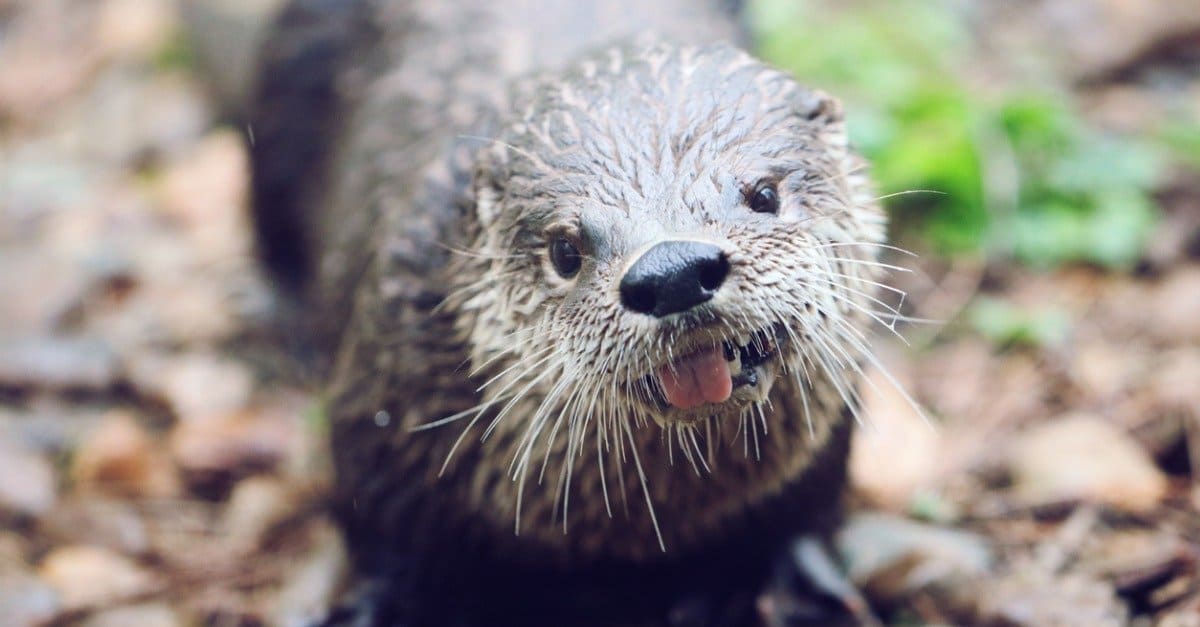There are two otters that reside in North America, the North American river otter and the sea otter. These two cuddly-looking critters have earned the reputation of being adorable, friendly, and affectionate, and well deserve it! The charming critters use tools and live unique solitary lives floating in North American waters. But what do we really know about them? Let’s take a look at the otter lifespan, basic life cycle and habitat and get to know these adorable critters better.
North American River Otter (Lontra canadensis) Lifespan
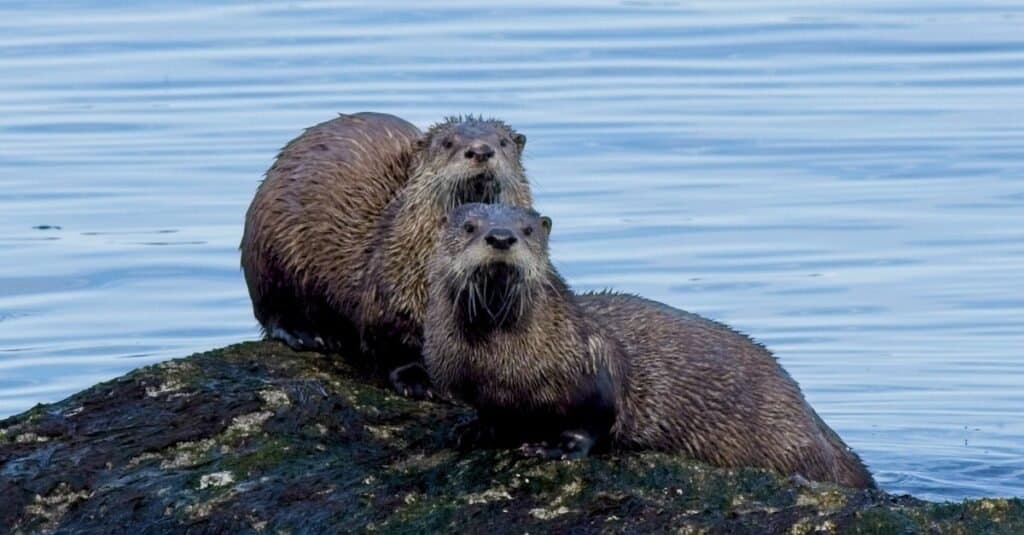
North American river otters are believed by many to be monogamous animals, sharing their lives together as pairs. Not enough research on the animals in the wild exists to prove this, but it sure is a lovely image from the animal kingdom!
©iStock.com/pr2is
Overall, North American river otters typically live between 10 and 15 years in the wild. It takes river otters between 2 and 3 years to reach full sexual maturity, after which lifespan may vary because of a number of factors. Healthy, readily available food, safe shelter and distance from busy urban areas may all impact the lifespan of otters in the wild.
In captivity, North American river otters generally live to 12 years of age as a minimum with many living into their 20s. The longest-living otter was known to reach 27 years of age.
Mortality rates for river otter pups have been estimated at about 32 percent within the first year of life, and 54 percent in their second year. After this time, wild otters are more likely to live full lives for up to 15 years.
Northern Sea Otter (Enhydra lutris kenyoni) Lifespan
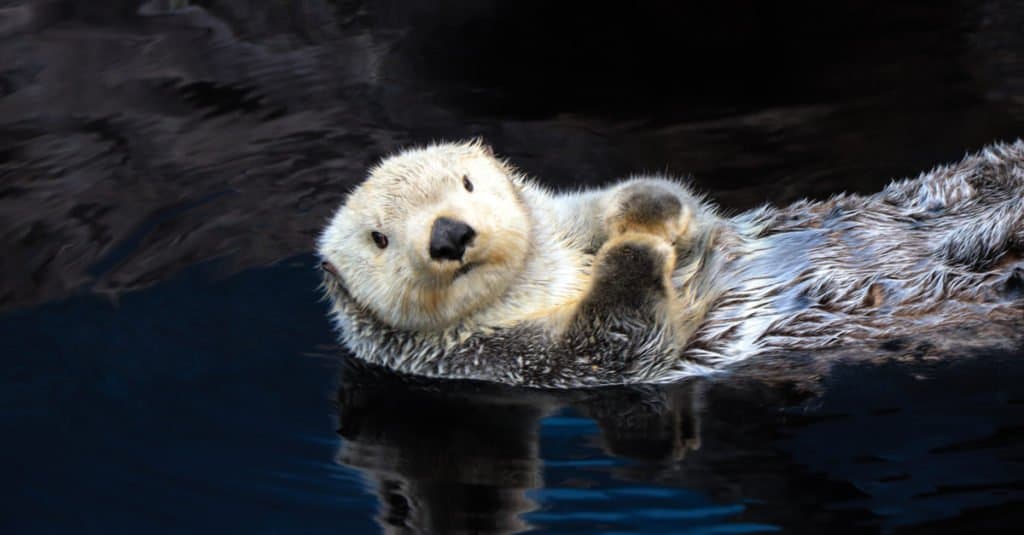
Sea otters spend most of their lives in the ocean. They even rear their young in the water, wrapping them in kelp to keep them safe when mama otter needs to find food.
©nvphoto/Shutterstock.com
In the wild, sea otters live to a maximum of 23 years, with a more common lifespan of 10 to 15 years for males and 15 to 20 for females. Captive sea otters are likely to live even longer, with females often reaching into their twenties and males into their early twenties. The oldest recorded male reached 23 years old, and the oldest female hit 28 years old, both in captivity. One theory on shorter lifespans in the wild is the lack of dental care, resulting in worn teeth which can result in health issues and the inability to eat.
Sea otter females reach sexual maturity between three and four years of age, while males reach maturity at five years. It often takes males a few more years to see successful breeding occur, though.
North American River Otter Life Cycle and Habitat
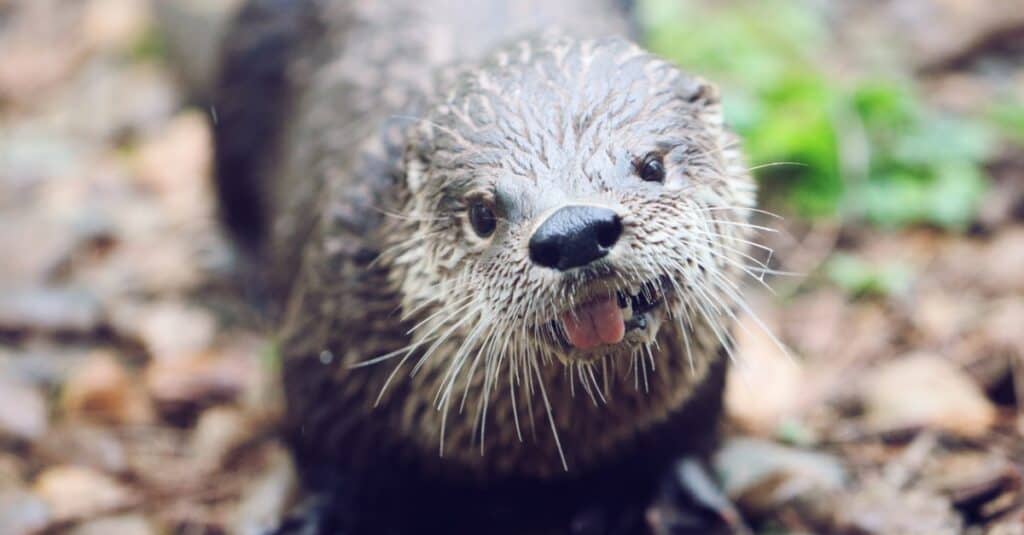
River otters are known to come together to play and socialize. The adorable animals have a cheeky personality and live up to 15 years in the wild.
©iStock.com/Heather Burditt
North American river otters grow between 30 and 60 inches in length, weighing between 10 and 33 pounds. Their long, slender bodies have short, muscular legs, small heads, and long necks. Their tails are also muscular but flattened, while their feet are fully webbed with sharp nails that don’t retract. The fur of river otters is short and dense to keep them warm in winter and cold waters, with brown to gray coloring and light cream or silver on their undersides.
These otters are marked by the IUCN as Least Concern, meaning they have populations over 500,000 in the wild. These otters generally live up to 12 years in the wild, thriving as independent, social animals. They typically live solo or in pairs, though males have numerous potential mates, but could be polygynous. They frequently gather together to play and socialize.

North American River Otter Mating
Studies in the wild are challenging for river otters, so most of the information we have on them is from captive animals in rescues, sanctuaries, and zoos. Some studies suggest the otters will mate for life, while others suggest pairing off for only a few months at a time before the otters find new mates.
Breeding season in the wild isn’t well established, with some studies showing mating occurs in winter, summer, or spring. Delayed implantation, however, is what we do know. After mating, 9 to 11 months later, gestation begins and lasts for 60 days. Pups are usually born between March and April. After the pups mature for about a month, the mother otter tends to chase away the male otter. Some instances have shown the males come back after the pups are weaned and he helps to raise them at this point.
Family groups stay together through the summer into early autumn, with pups first appearing outside of dens at about 2 months of age. This is when they can start swimming safely, though it may take one to two more months before weaning is complete. These units stay together either until 7 to 8 months have passed or the mother gives birth to the next litter.
North American River Otter Range
North American river otters range from the Rio Grande into Canada and as far north as Alaska. Rivers, marshes, freshwater streams, lakes, ponds, and the occasional marine environment provide these critters habitat. They will not be found in arid or barren arctic regions. Generally speaking, they prefer homes away from human life where they can catch fish, crayfish, frogs, insects, turtles, and smaller mammals.
Sea Otter Life Cycle and Habitat
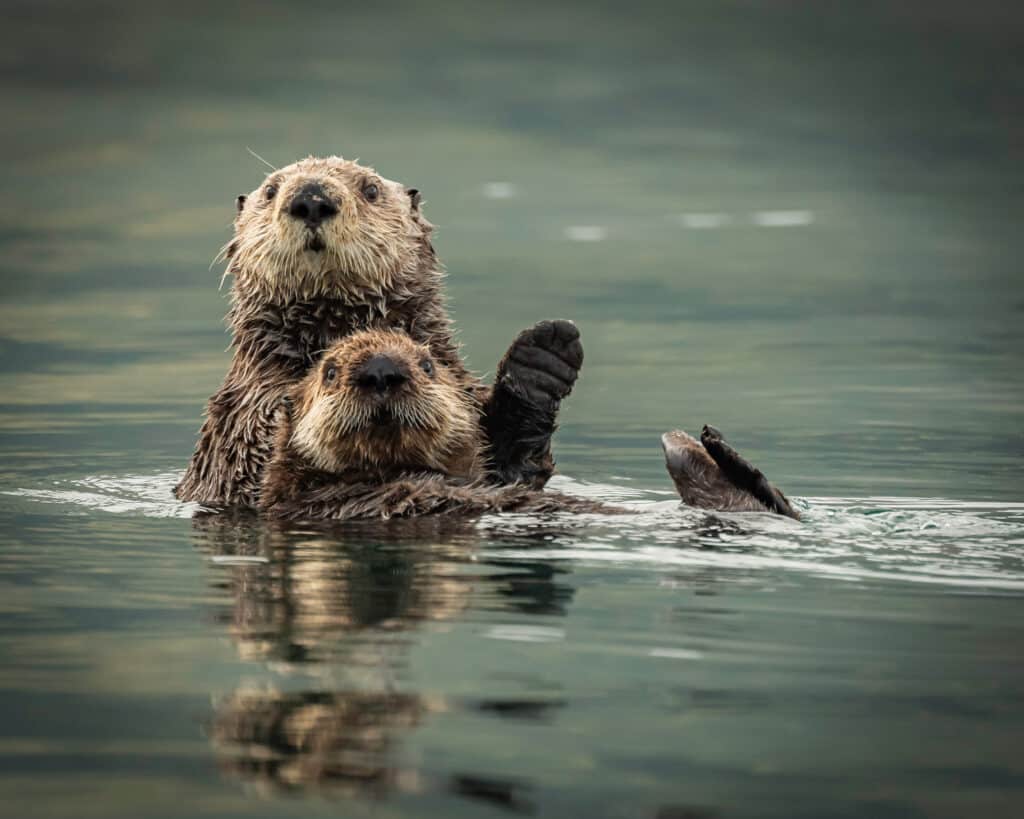
Sea otters come together for mating any time of year. The critter stays bonded for 3 days and then part ways. They spend most of their lifespan in the oceans, swimming, feeding, and even sleeping on their backs or wrapped in kelp.
©Laura Hedien/Shutterstock.com
Sea otters have round faces with short noses, round eyes, and ears. The mammals grow to between 47 and 59 inches in length, weighing between 35 and 85 pounds. Their back legs are shorter than their front legs, with large, flat, webbed paws, and shorter feet with retractable claws on the front. They use these long arms and smaller paws for grooming and eating, which is part of where they get their famous adorable looks.
One distinction the sea otter has from river otters is its large flaps of skin under their forearms. These flaps function like storage pockets for them, where they keep tools like rocks and sticks. This means they can swim around easily while still carrying their treasures.
Mating of Sea Otters
These critters are polygynous, meaning males take multiple mates each year, yet they do peacefully defend their territories against other males. Fights are rare between them. Sea otters mate year-round, with pairs bonding for three days only during this time. Males hold their female mates by the head or nose with their jaws, sometimes leaving behind scars. This species also undergoes delayed implantation, meaning gestation could take a while from mating until birth.
The total gestation period (including delays) could be anything from 4 to 12 months. Female sea otters can give birth every year, but many only do so every other year. This species is only capable of bearing one pup at a time, with a rare 2-percent chance of two pips at once. In most cases, the mother can only care for one pup and will mourn the death of the second.
Sea otter pups remain with their mothers for five to six months, with the fathers taking no part in the raising of the babies. If the mother needs to search for food while the pup is nursing, she will wrap it in kelp to prevent it from drifting away and going in search of food.
Sea Otter Range
This species of otter ranges along the Pacific Coast from the Kuril and Commander islands off the coast of Russia to the Aleutian Islands near the Bering Sea. They also live along the Alaska Peninsula down to Vancouver Island in Canada. Natural barriers keep the otters within these ranges among temperate coastal waters with giant kelp forests. Offshore habitats in rocky and soft sediment are preferred, in waters no deeper than 98 feet. Sea otters have been deemed Endangered by the IUCN Red List.
Thank you for reading! Have some feedback for us? Contact the AZ Animals editorial team.

